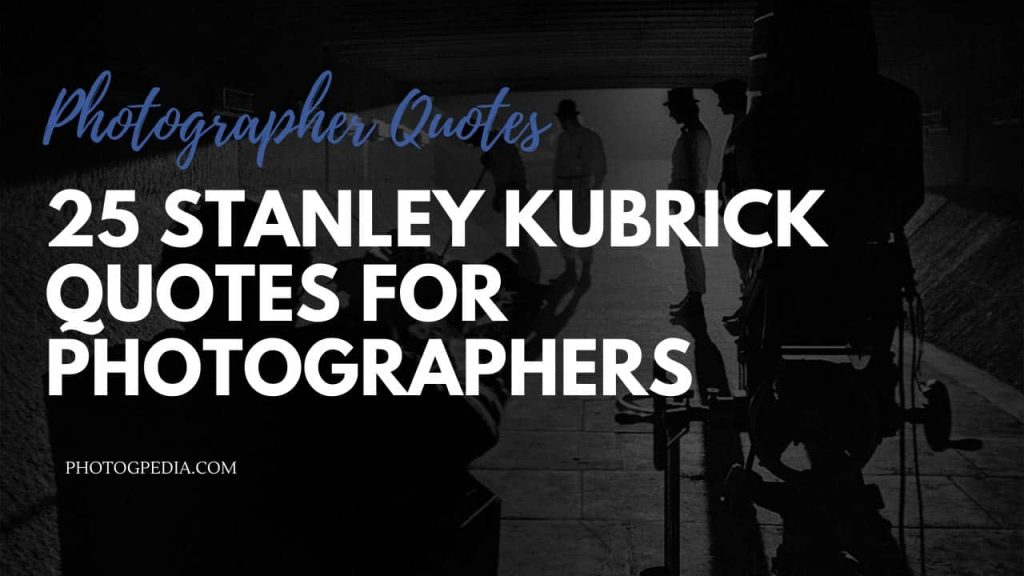Stanley Kubrick needs little introduction. He’s considered one of the greatest film directors of the 20th century and was a former professional photographer when he was just seventeen.
The visionary directors images are indelibly marked on pop-cultural unconscious: the ape throwing a bone in the air at the beginning of 2001: Space Odyssey, Alex and his droogs drinking milk at the Korova milk bar in Clockwork Orange and Jack Nicholson’s, “Heeeere’s Johnny” in The Shining.
In this article, I’ll be sharing 25 memorable Stanley Kubrick quotes and interview excerpts that all photographers can learn from. It doesn’t matter, whether you’re starting out on your photography journey or an advanced professional, these words of wisdom from Stanley Kubrick will give you pause for thought and help take your photography to the next level.
If you would like to learn more about Stanley Kubrick’s early career as a photographer at Look and his transition to movies, then check out our article: Stanley Kubrick: From 17-Year-Old Photography Prodigy to Master Film Director.
Looking for a masterclass in filmmaking? Check out our article: Filmmaking Quotes from the Masters of Cinema
Stanley Kubrick Quotes
On Visual Storytelling
Because of my background in photography, I have been able to quickly figure out the best visual way to photograph or represent a scene on the screen. But I never start thinking in terms of shots. I first begin thinking of the main intent of the film. After the actors rehearse the scene and achieve a level of reality and excitement, only then do I really look through the viewfinder and try to figure out the best way to put this on the screen.
Generally speaking, you can make almost any action or situation into an interesting shot, if it’s composed well and lit well. I’ve seen many films in which interesting camera angles and lighting effects are totally incongruous to the purpose of the scene. When the whole thing is over, you’ve seen a rather interestingly photographed movie that has no effect at all.
The making of any film, whatever the historical setting or the size of the sets, has to be approached in much the same way. You have to figure out what is going on in each scene and what’s the most interesting way to play it. With Spartacus, whether a scene had hundreds of people in the background or whether it was against a wall, I thought of everything first as if there was nothing back there. Once it was rehearsed, we worked out the background.
With very few exceptions, I think it is necessary to keep your staging ideas for the very last moment and to use the decor and the action that you ultimately choose as the basis of what you want to shoot. (…) The most important thing is to carefully rehearse a scene and make sure you have something interesting to film. It’s after that you can take care of the “how”. The “how” should always follow the “what”. It’s the content and the ideas that come first. After that, we can worry about how to film them. These staging ideas are almost never in a scenario.”
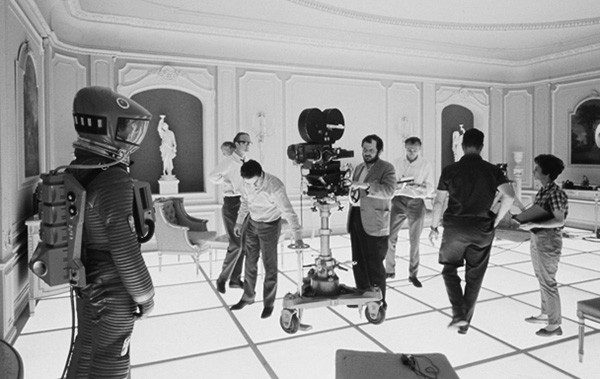
Stanley Kubrick Quotes on Style
If something is really happening on the screen, it isn’t crucial how it’s shot. Chaplin had such a simple cinematic style that it was almost like I Love Lucy, but you were always hypnotized by what was going on, unaware of the essentially non-cinematic style. He frequently used cheap sets, routine lighting and so forth, but he made great films. His films will probably last longer than anyone else’s. You could say that Chaplin was no style and all content. On the other hand, the opposite can be seen in Eisenstein’s films, who is all style and no content or, depending on how generous you want to be, little content.
Your own style, if you get a chance to make a film, is really a result of the way your mind works, imposed on the semi-controllable factors that exist at the time you start, both in terms of time, or the way the set looked, or how good the actors were that day. I don’t think it matters which films you look at.
Close attention to a single film teaches you a great deal. Film schools could be useful if you get a chance to lay your hands on a camera and see a little film equipment, but as far as film aesthetics are concerned, I think that they’re largely a waste of time. You’re generally hearing the views of somebody who rarely warrants listening to. You’re much better off taking films by great filmmakers and studying them very closely.
Related: The Best Cinematography Quotes
On Planning
I do a tremendous amount of planning and try to anticipate everything that is humanly possible to imagine prior to shooting the scene, but when the moment actually comes, it is always different.
Either you discover new ideas in the scene, or one of the actors by some aspect of his personality has changed something—or any one of a thousand things that fail to coincide with one’s preconceived notions of the scene. This is, of course, the most crucial time of a film. The actual shooting of a scene, once you know what you are going to do, is relatively simple. But it is here that the picture always hangs in the balance.
The problem, expressed perhaps a bit too simply, is to make sure that something happens worth putting on film. It is always tempting to think of how you’re going to film something before you know what it is you’re going to film, but it’s almost always a waste of time.
I’ve always been impressed reading that some directors sketch out the scenes and can actually find that it works. It may be some shortcoming of my screenplay, but I find that no matter how good it ever looks on paper, the minute you start in the actual set, with the actors, you’re terribly aware of not taking the fullest advantage of what’s possible if you actually stick to what you wrote.
I also found that thinking of shots, or thinking of the way to shoot a scene before you’ve actually rehearsed it and got it to the point where something is actually happening that is worth putting on film, will frequently prevent you from really getting into the deepest possible result of the scene.
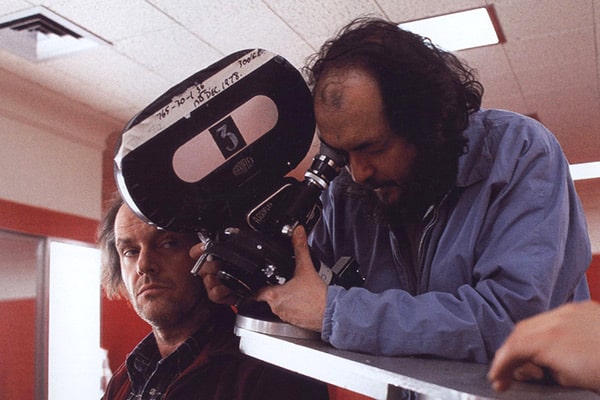
Stanley Kubrick Quotes on Spontaneity
I think about a film almost continuously. I try to visualize it and I try to work out every conceivable variation of ideas which might exist with respect to the various scenes, but I have found that when you come down to the day the scene is going to be shot and you arrive on the location with the actors, having had the experience of already seeing some of the scenes shot, somehow it’s always different.
You find out that you have not really explored the scene to its fullest extent. You may have been thinking about it incorrectly, or you may simply not have discovered one of the variations which now in context with everything else that you have shot is simply better than anything you had previously thought of.
I think aesthetically recording spontaneous action, rather than carefully posing a picture, is the most valid and expressive use of photography.
The key part in shooting a film is not to necessarily execute what you had in mind but stay loose in case you have a better idea.
Any art form properly practiced involves a to and fro between conception and execution, the original intention being constantly modified as one tries to give it objective realization. In painting a picture this goes on between the artist and his canvas; in making a movie it goes on between people.
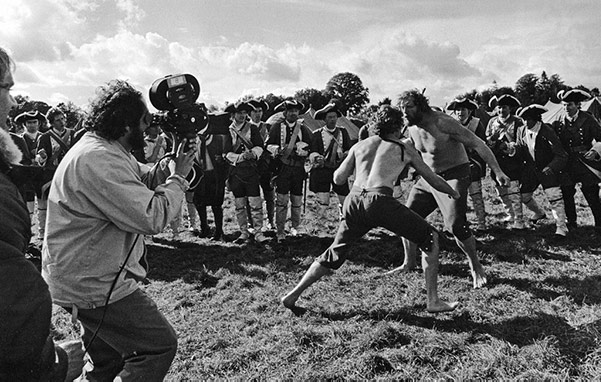
On Story, Reality, and Fiction
[Making movies] you’re not trying to capture reality; you’re trying to capture a photograph of reality.
Everything has already been done. Every story has been told every scene has been shot. It’s our job to do it one better.
Everything has changed, but the process of telling a story has not changed. It’s like cavemen sitting round the fire; somebody’s going to tell the story. Somebody is drawing on the wall. You’re communicating. You’re trying to learn and teach at the same time. You’re your own student and you’re your own teacher, but the process is of the communicating.
There is a very wide gulf between reality and fiction, and when one is looking at a film the experience is much closer to a dream than anything else. In this day-dream, if you like, one can explore ideas and situations which one is not able to do in reality.
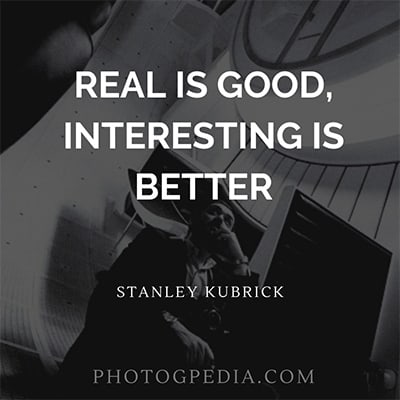
The Importance of Emotion
In making a film, I start with an emotion, a feeling, a sense of a subject or a person or a situation. The theme and technique come as a result of the material passing, as it were, through myself and coming out of the projector lens. It seems to me that simply striving for a genuinely personal approach, whatever it may be, is the goal. Bergman and Fellini, for example, although perhaps as different in their outlook as possible, have achieved this, and I’m sure it is what gives their films an emotional involvement lacking in most work.
I don’t think writers, painters or filmmakers work because there is something they particularly want to say; there is something they feel. And they like the artistic form: they like words; either they like the smell of paint; or they like celluloid, photographic images and working with actors. I don’t think any real artist has ever been guided by any point of view didactic, even when he thought it was.
Stanley Kubrick Quotes on the Work
How could we possibly appreciate La Giocanda [the Mona Lisa] today if Leonardo had written at the bottom of the canvas: “This lady is smiling slightly because she has rotten teeth” – or “because she’s hiding a secret from her lover”? It would shut off the viewers reality and shackle him to a “reality” other than his own. I don’t want this to happen to 2001.
One of the things I always find extremely difficult, when a picture’s finished, is when a writer or a film reviewer asks, ‘Now, what is it that you were trying to say in that picture?’ And without being thought too presumptuous for using this analogy, I like to remember what T. S. Eliot said to someone who had asked him – I believe it was The Waste Land – what he meant by the poem. He replied, ‘I meant what I said.’ If I could have said it any differently, I would have.
On Editing
When I’m editing, I’m only concerned with the questions of “Is it good or bad?”, “Is it necessary?”, “Can I get rid of it?”, “Does it work?” My identity changes to that of an editor. I am never concerned with how much difficulty there was to shoot something, how much it cost, and so forth. I look at the material with completely different eyes. I’m never troubled losing material. I cut everything to the bone. When you’re shooting, you want to make sure you don’t miss anything, and you cover it as fully as time and budget allow. When you’re editing, you want to get rid of everything that isn’t essential.
I breezed through Paths of Glory without being aware of many things I now see are mistakes. The more you learn about an art form the more difficult it becomes because you create harder rules for yourself.
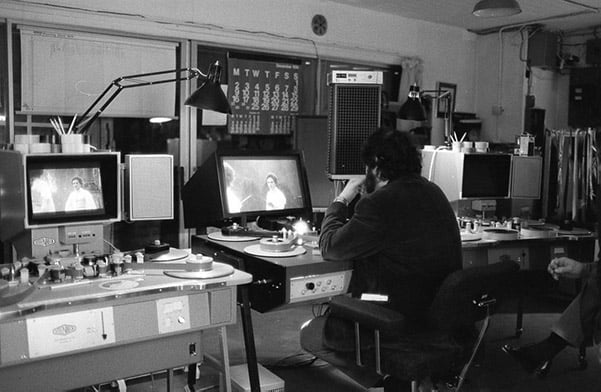
Working with Actors (Subjects/or Models)
Yes, well, that was a device [playing music on the set] used, you know, by silent-film actors – they all had their own violinists, who would play for them during the takes, and even sort of direct them. And I think it’s probably the easiest way to produce an emotion… which is really the actor’s main problem – producing authentic emotion.
We play it before the take, and if the dialogue isn’t too important, during the take and then post-synchronize the dialogue – it’s amazing how quick this will work, and I mean making a movie is such a long, fragmented, dragging process, and you get into, say, about the ninth week, you’re getting up every morning at 6:30, not enough sleep, probably no breakfast, and then at 9:15, you have to do something you feel about as far from doing as you possibly can… So, it’s a matter of getting in the right mood – and music I’ve found is the best for this, and practically everyone can respond to some piece or other.
[Peter Sellers] was the only actor I knew who could really improvise. Improvisation is something useful in rehearsal to explore a role, but most actors when they improvise, stray into a repetitive hotchpotch which leads them down a dead end. While Sellars by contrast, even when he wasn’t on form after time fell into the spirit of a character and just took off. It was miraculous.
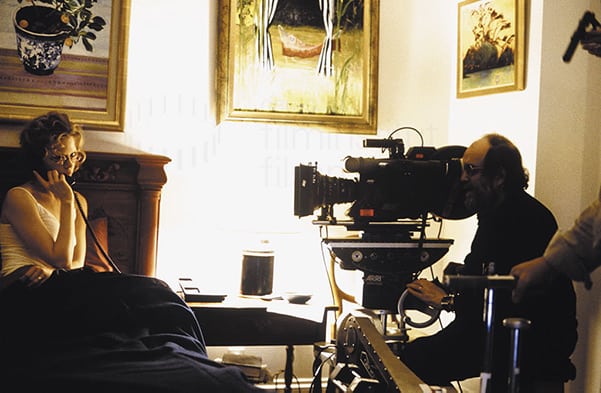
Advice for Photographers
Think up ideas for stories, go out and shoot them, and then send them into the magazines. I was lucky; I figured that out when I was young.
Kubrick Quotes Final Words
What’s your favorite Stanley Kubrick quote? Let us know in the comments section below.
If you’ve enjoyed this article, please share it on the usual social channels and link back to us on your own blog. Also, don’t forget to follow us on Twitter or Instagram to keep up to date with our latest posts.
If you haven’t done so already, then check out our Kubrick article: Stanley Kubrick: From 17-Year-Old Photography Prodigy to Master Film Director. Viddy well, my friends. Viddy well.

